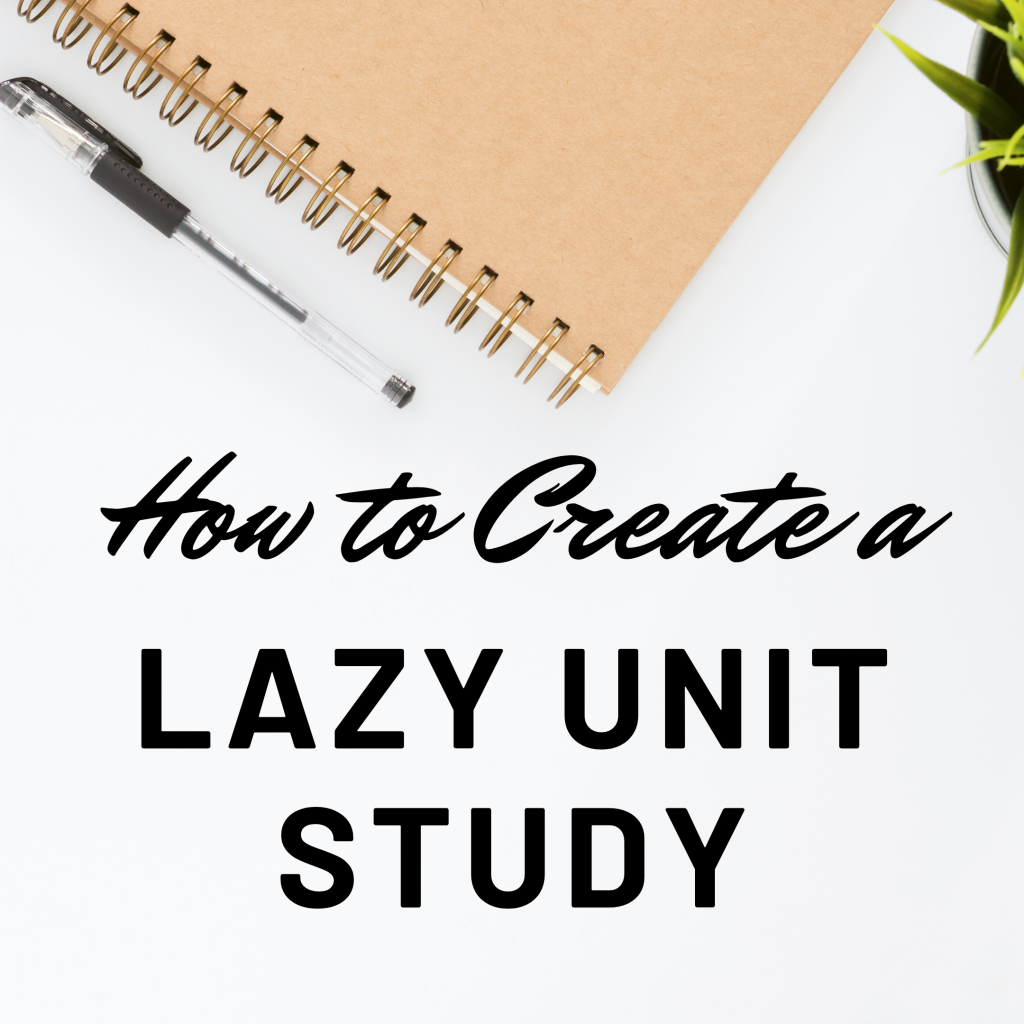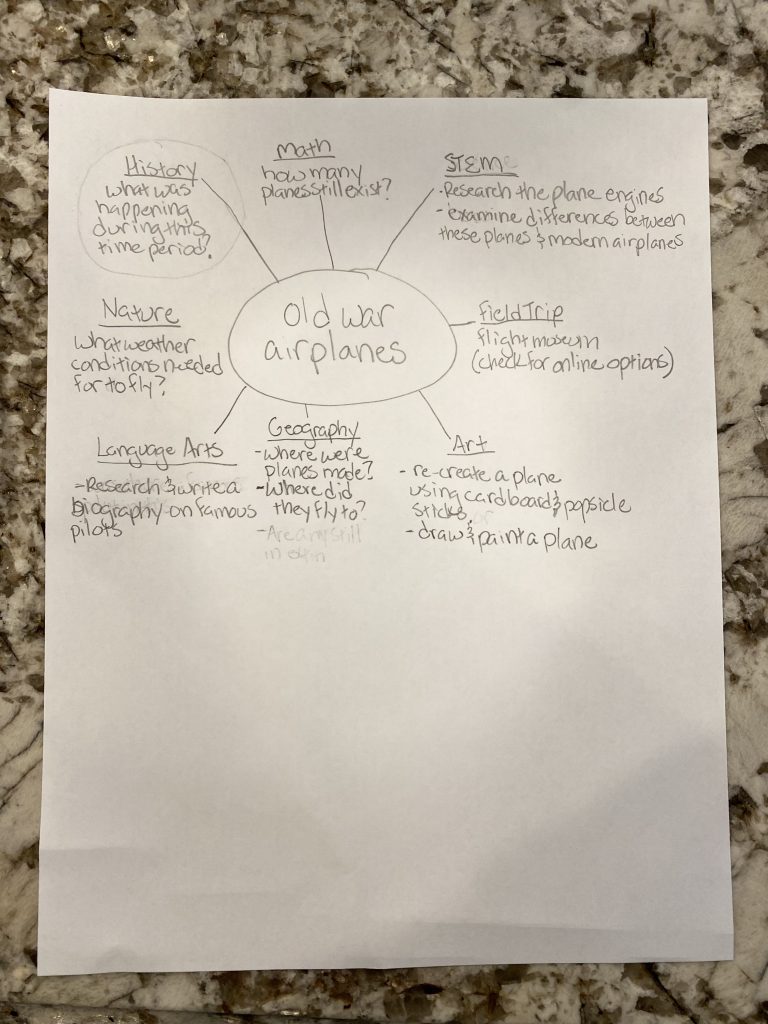
Lazy Unit Studies are my secret homeschool weapon. They are simple to create and a perfect fit with our homeschool routine. I learned about them last year when one of my favorite homeschool bloggers, My Little Poppies, wrote about it on her website. If you’re suddenly homeschooling and unsure what to do with your children, I highly recommend reading this post. Lazy Unit Studies have produced great conversations and sparked unexpected joy and learning in my children.
What’s a Lazy Unit Study?
A Lazy Unit Study is a deep-dive into one of your child’s interests. We’ll add layers to the interest until your child is satisfied. It can be as in-depth as you want or keep it simple with a couple resources. There’s loads of flexibility in this style of learning. Let’s get started.
How Do I Create a Lazy Unit Study?
Take a few minutes to write down all of your child’s interests. I know they change frequently, but write down everything that comes to mind. It doesn’t have to be a school-related subject. What is your child passionate about right now? Soccer? Minecraft? Digging in the dirt outside? Art? Old airplanes?
Have you had frequent discussions with your child about a topic lately? Write it down! NIko noticed the full moon last week and asked questions about it. We’re starting a lazy unit study on the moon and its phases because of his questions.

Next, select one topic from your interest list. Let’s brainstorm about it. I’ll use old war airplanes as an example. Did you ever use mind maps in high school? If not, this is what it looks like. We put our topic in the middle and all the subjects we need to cover in spokes off the center topic.
There’s no right or wrong way to fill out the mind map. Do what’s best for you, but this your time to think “outside the box.”
Does your child adore art? Plan two art activities related to old war planes. Does he need to work on his penmanship? Have him write the names of the planes in print and cursive.
Got a middle school kid? Have her write a detailed report on a famous pilot. Make her cite resources and find photos of old planes to include. The possibilities are endless.
Layer on the Education
Now that you’ve completed your mind map, let’s put it into action. Start with your local library. Seek out books about old war airplanes and the related topics on your map. With libraries closed, utilize e-books and audiobooks.
Are there movies or documentaries about the planes? What about an interview with a former pilot? Or a virtual field trip to an air field base? Add those to your list.

Search online, too. Is there a club or organization dedicated to old war planes? Is there a website that deals specifically with flight paths and weather?
If you’re feeling overwhelmed with all the resources, remember your mind map. Complete those tasks outlined on your map and answer those questions first.
Make or Find A List of Questions
When I create Lazy Unit Studies for educational purposes I produce a list of questions from scratch or scour the internet for ideas. For war planes my list of questions might be the following:
- What’s your favorite plane? Why?
- What classifies an airplane as a “war plane”?
- What was happening in history during this time period? (For older kids ask in-depth and follow-up questions.)
- How many are still in existence today? Where are they located?
- Tell me about the engine of a war plane. How is it different from a traditional airplane?
- What are optimal flying conditions?
- What types of weather ground a plane?
Read, Watch, Play and Soak In the Information
Dig into all the information you’ve gathered. Read the books and watch the documentaries. Collect data from the websites and dig as deep as your child wants into the topic. Have your child take notes and answer questions from the list as they absorb all the information. Enjoy creating the art projects and the time you’ve spent together learning about the topic.
Lazy Unit Studies can last a few days to a few weeks. It really depends on how much time is dedicated to the study and how deep your child wants to dig into the topic. Don’t be discouraged if they fizzle out after reading a book and watching a documentary. That’s okay. Try another topic and see where it leads. Our family has covered quick and easy Lazy Unit Studies and in-depth studies on animals, artists, Legos and more. What matters is that my children learned from the studies and had fun in the process.
I hope you found this post helpful during your suddenly homeschooling period. If you have questions, please reach out. If you’d like more detailed information and oodles of resources on Lazy Unit Studies, I recommend purchasing My Little Poppies course HERE.
